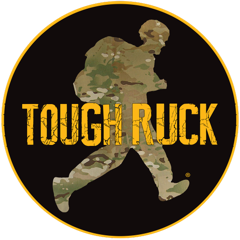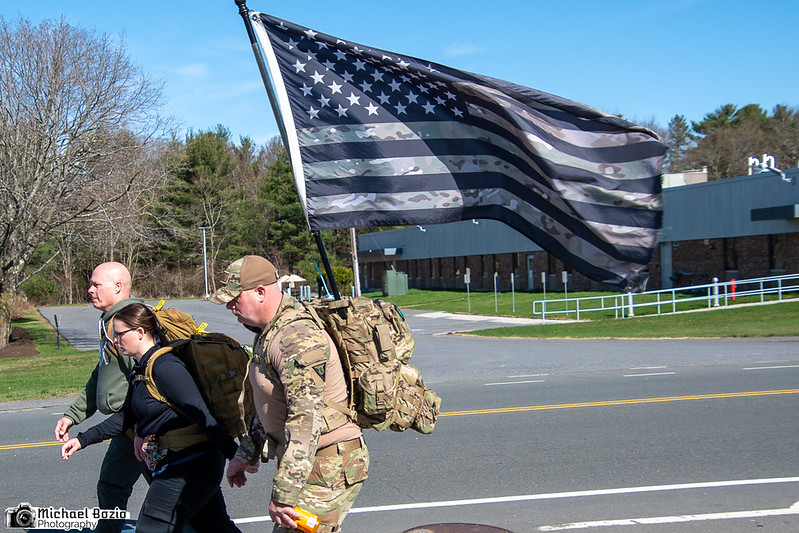The day of the Tough Ruck should not be the first time you wear your clothing (kit) on a ruck! Ideally you will wear your kit for your last several training rucks. Use early rucks to dial in your setup.
Clothing
All ruckers in a military division will wear their combat/utility uniform; see the uniform guide on ToughRuck.org for more information. Civilian ruckers have no such restriction. Recommended clothing includes long pants, a top that covers any areas in contact with your ruck, and a hat or visor to reduce your chance of sunburn. Ruckers should consider packing some type of wet weather clothing and something warm. The weather in New England is April is famously variable. Dressing in layers is the key to keeping yourself comfortable – it is easy to add or subtract as needed if you’ve packed appropriately.
Socks are a critical but often overlooked detail when preparing for a long-distance event. This section explores the different materials and fabrics that socks are made of and address some of the pros and cons of each.
Sock Liners, Nylons, and Keeping Your Feet Dry.
Sock liners help keep your feet dry and reduce the opportunity for blisters to form. Foot powder is also an effective tool in keeping your feet dry, but be judicious – too much powder can cause problems and may even create additional friction. A light coating is all you need. The goal is to reduce friction as much as possible.
Comfort items
The fastest finisher at the 2017 Tough Ruck finished in 4 hours, 12 minutes (or 9:38/mile), which is amazing but faster than most people run a marathon. Although laudable, that is not the experience of most ruckers. You should expect to be on the course 6-8 hours; your training rucks will give you a more accurate estimate. In that amount of time things can and will happen.
Here’s a list of items you should consider packing:
– sunscreen
– bug repellent
– Moleskin
– anti-chafing product
– foot powder
– hand warming packets
– duct tape
– waterproof layer
– cold weather gear
– spare footwear


